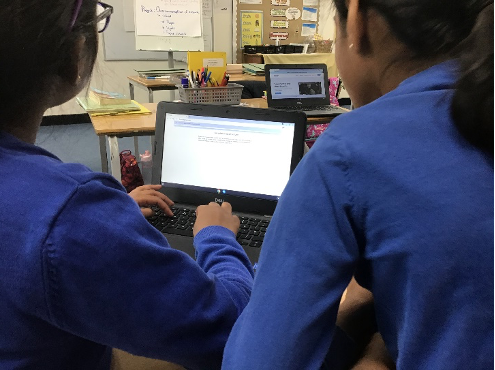Computing

Curriculum Intent
Our children will become confident and literate in all aspects of computing. They will develop a curiosity and understanding of the core principles of the computing curriculum; computer science, information technology and digital literacy. They will gain an appreciation of the ever-changing world of technology in which we live and be excited by the opportunities that programming and computing provides. The skills that the children develop, will foster both their logical and their practical minds as well as challenge their creativity, encouraging them think of computing not just in a lesson but also of its real-life implications.
Curriculum Implementation
Computing is taught through three main strands; computer science, information technology and digital literacy. The strands are underpinned by the computing curriculum aims and are taught through half-termly units. The units allow the children to consolidate and build upon prior learning, reinforcing skills and knowledge year on year.
Computer science and programming prepares our children for an ever-changing industry; starting with simple algorithms using Bee-Bots, moving into block-based visual programming and culminating in an introduction to the programming languages of HTML and Python. By introducing these programming language skills to our children, we are preparing them for not just secondary school, but beyond.
Throughout different units, children will become competent in using a wide variety of programs and software for a range of purposes. Information technology is woven throughout the wider curriculum, ensuring that the application of the skills taught have a meaningful outcome.
Digital literacy will be taught alongside our Wellbeing curriculum to support our children in becoming confident conscientious online users. Each year group has a unit on being Online Communicators which raises their awareness of both the benefits and the risks of using technology.
Teachers have good subject knowledge and access to up-to-date planning and resources with an emphasis on developing their confidence in the teaching of computing.
Curriculum Impact (including pupil outcomes)
Outcomes:
- Children design, write and debug programs that accomplish specific goals.
- Children use logical reasoning to explain how simple algorithms work including debugging.
- Children are able to use search technologies effectively.
- Children can use and combine a variety of software including analysing, evaluating and presenting data and information.
- Children understand the opportunities for communication and collaboration that being online provides.
- Children all use technology safely, respectfully and responsibly, and recognise acceptable and unacceptable behaviour.
